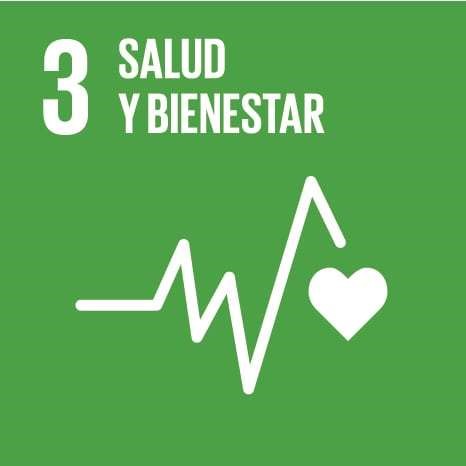
https://www.un.org/sustainabledevelopment/es/health/
SDG 3: Ensure healthy lives and promote well-being for all at all ages
Ensuring healthy lives and promoting universal well-being is central to achieving the Sustainable Development Goals.
However, many regions face serious health risks, including high rates of maternal and neonatal mortality, the spread of infectious and non-communicable diseases and poor reproductive health. Great progress has been made in recent decades in increasing life expectancy and reducing some of the most common causes of death related to infant and maternal mortality, but to achieve the Goal's target of fewer than 70 deaths by 2030, skilled attendance at birth will need to be improved. Similarly, achieving the target of reducing premature deaths from noncommunicable diseases by one-third by 2030 will require more effective clean cooking fuel technologies and education about the risks of tobacco.
Many more initiatives are needed to completely eradicate a wide range of diseases and to address many different persistent and emerging health issues. If we focus on providing more efficient financing of health systems, improving sanitation and hygiene, increasing access to medical services and providing more advice on how to reduce environmental pollution, we will make significant progress in helping to save the lives of millions of people.
Outstanding dataChild health *17,000 fewer children die every day than in 1990, but more than five million children now die every year before their fifth birthday. *Since 2000, measles vaccines have prevented nearly 15.6 million deaths. *Despite progress worldwide, under-five mortality remains high in sub-Saharan Africa and South Asia. Four out of five under-five deaths occur in these regions. *Children born poor are almost twice as likely to die before the age of five as those from wealthier families. *Children of educated mothers, even mothers with only primary education, are more likely to survive than children of uneducated mothers. Maternal health *Maternal mortality has declined by 37 per cent since 2000. *In East Asia, North Africa and South Asia, maternal mortality has declined by about two-thirds. *But the maternal mortality ratio - the proportion of mothers who do not survive childbirth compared to those who do - in developing regions is still 14 times higher than in developed regions. *More women are receiving antenatal care. In developing regions, antenatal care increased from 65 per cent in 1990 to 83 per cent in 2012. *Only half of women in developing regions receive the recommended amount of health care they need. *In most developing regions, fewer adolescents are having children, but this progress has slowed. The large increase in contraceptive use in the 1990s has not matched the increase in the 2000s. *The need for family planning is slowly being met for more women, while demand continues to increase rapidly.
HIV/AIDS, malaria and other diseases
|
Goal 3 targets3.1 By 2030, reduce the global maternal mortality ratio to below 70 deaths per 100,000 live births 3.2 By 2030, end preventable newborn and under-five deaths, with all countries aiming to reduce neonatal mortality to at least 12 per 1,000 live births, and under-five mortality to at least 25 per 1,000 live births 3.3 By 2030, end the epidemics of AIDS, tuberculosis, malaria and neglected tropical diseases and combat hepatitis, water-borne diseases and other communicable diseases 3.4 By 2030, reduce by one-third premature mortality from non-communicable diseases through prevention and treatment and promote mental health and wellbeing 3.5 Strengthen the prevention and treatment of substance abuse, including drug abuse and harmful use of alcohol 3.6 By 2020, halve the number of global deaths and injuries from road traffic crashes 3.7 By 2030, ensure universal access to sexual and reproductive health services, including family planning, information and education, and the integration of reproductive health in national strategies and programmes 3.8 Achieve universal health coverage, including financial risk protection, access to quality essential health services and access to safe, effective, affordable and quality medicines and vaccines for all 3.9 By 2030, substantially reduce the number of deaths and illnesses from hazardous chemicals and air, water and soil pollution 3.10 Strengthen the implementation of the World Health Organisation Framework Convention on Tobacco Control in all countries, where appropriate 3.11 Support research and development of vaccines and medicines for communicable and non-communicable diseases that primarily affect developing countries and facilitate access to affordable essential medicines and vaccines in accordance with the Doha Declaration on the TRIPS Agreement and Public Health, which affirms the right of developing countries to make maximum use of the provisions of the Agreement on Trade-Related Aspects of Intellectual Property Rights regarding flexibilities to protect public health and, in particular, to provide access to medicines for all 3.c Substantially increase health financing and the recruitment, development, training and retention of the health workforce in developing countries, especially in the least developed countries and small island developing States 3.d Strengthen the capacity of all countries, in particular developing countries, in early warning, risk reduction and management of national and global health risks |










